Selective Six: Our favourite Asian curries
by Gemma
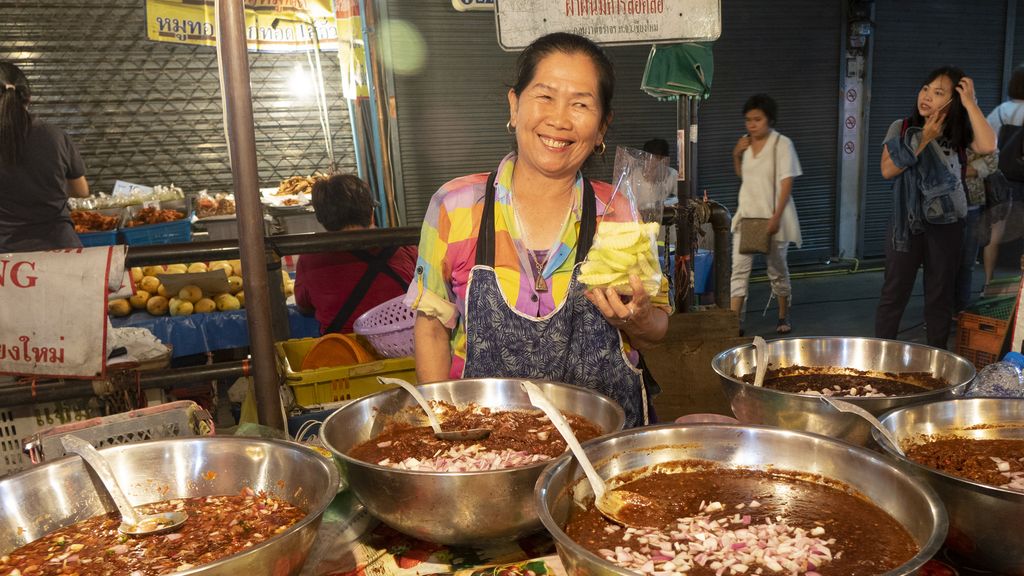
We love a curry here at Selective Asia HQ, and fully embrace any excuse to dine daily on our favourite dish!
Although in many people’s minds the word curry is synonymous with India, and the dish can allegedly trace its origins to the Indian subcontinent, a variation on what is essentially a spicy stew is eaten in most Asian countries. Each country has put its own unique stamp on the dish. Thai curries typically feature coconut milk and use more fragrant herbs than the heavy-hitting Indian curries. Japanese Katsu curry is different again, and comprises a sweeter sauce that’s poured over bread-crumbed meat.
The SA team have sampled some exceptional examples of this popular fare over the years, and after much passionate debate we’ve pulled together our six favourite Asian curry recipes. Special thanks to our local teams in Asia, who’ve provided these authentic recipes so you can recreate them at home.
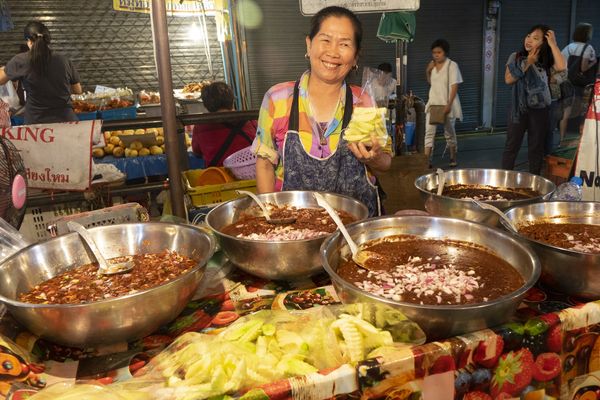
Ingredients (serves 4)
1 lb pork belly, cut into big chunks
1 lb pork spare rib tips, chopped
¼-⅓ cup tamarind juice
2 tbsp dark brown sugar or palm sugar
1-2 tsp dark soy sauce
1 ½ – 2 tbsp fish sauce
1 head garlic (peeled, but keep cloves whole)
½ cup chopped shallots
¼-⅓ cup chopped ginger
Gaeng Hung Lay curry (Thailand)
Thai green curry is now a familiar dish across the UK, and most British supermarkets stock all the ingredients to rustle up a classic green curry. Although we’re not ones to turn down a steaming bowl of creamy green deliciousness, we’re rather partial to curries from northern Thailand. They do curries a little differently in the north: most significantly, coconut cream isn’t an essential ingredient, and pork is more frequently used. Gaeng Hung Lay gets a massive thumbs up from the SA team. Think deliciously tender pork chunks coated in a thick, rich, spicy sauce. Perfect comfort food on a chilly winter evening. It’s quite a time-consuming dish to make, but is well worth the effort.
Method
Preheat a wok or large pot over medium heat; do not add any oil, as there will be a lot of pork fat rendered. Add the pork belly pieces in one layer, without crowding the pan, and let them sear until well browned on 4 sides. Add the pork ribs and stir. Add the curry paste and toss to coat all pieces of pork well.
Once the paste is well distributed and it has had a couple of minutes to fry in the pork fat, add water just until it barely covers the pork. Add fish sauce, soy sauce, tamarind and sugar, and cook for 1h45m to 2h, loosely covered, until the pork is tender.
Towards the last 20 minutes, check the amount of liquid, and if it’s very soupy, uncover the pot completely to allow liquid to evaporate. You want the sauce to be thick and rich in the end. Once pork is tender, add ginger, whole garlic and shallots and simmer for another 15-20 minutes until the garlic is tender. You can add a little more water at any point if it gets too dry. Taste and adjust seasoning. Serve with sticky rice.
Hung Lay Curry Paste
8-10g dried mild red chilies, plus some spicier ones to taste
5 cloves garlic
⅓ cup chopped shallots
1 stalk lemongrass, bottom half only, chopped
5 slices galangal
1 ½ tsp powdered turmeric
2 tbsp hung lay curry powder (or use garam masala)
1 tsp fermented shrimp paste
Grind dried chillies into a powder. Blend lemongrass, galangal, turmeric, shallots, garlic and shrimp into a paste. Add the ground dry spices and blend to combine.
Hung Lay Curry Powder
8-inch cinnamon sticks
2 tsp black peppercorns
2 tsp turmeric powder
1 tsp ground cardamom
2 tbsp cumin seeds
2 tbsp coriander seeds
1 star anise
3 cloves
½ tsp nutmeg
2 tsp fennel
5 pc white cardamom
Toast the whole spices in a dry pan until aromatic and darkened slightly. Leave to cool, then combine all spices and grind into a powder. Store in an airtight container in a cool, dark place. You will have more than you need for this recipe, so feel free to use it as rubs, marinades, or on vegetables!
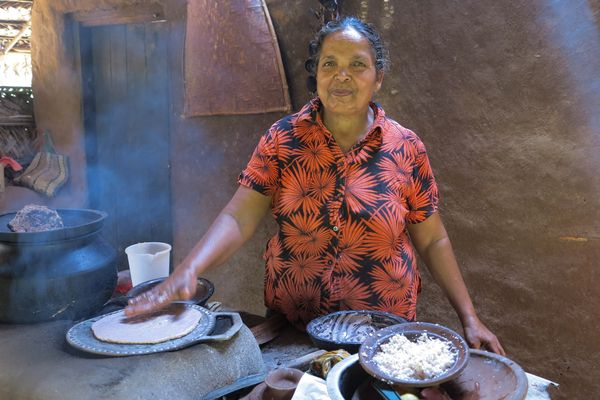
Polos curry (Sri Lanka)
Anyone who has visited Sri Lanka will know that curry and rice is the country’s national dish; a daily staple, in fact. You may even find potato curry served alongside string hoppers for breakfast. In Sri Lanka, instead of dishing up just one type of curry, it’s not unusual for a meal to consist of at least three different curry dishes served with a large dome of rice and a spicy sambal or two.
Picking our favourite Sri Lankan curry from a lengthy, mouth-watering list of meat, veg and fish options was not an easy task. It was a close-run race, but my beetroot curry nomination was pipped at the post by polos curry, the main ingredient of which is young jackfruit.
Incidentally, if do you fancy cooking a Sri Lankan beetroot curry, Rick Stein has an easy to follow recipe which produces delicious results.
Ingredients (serves 4)
3-4 tbsp oil
500g young/green jackfruit, cleaned and cut into cubes
1 tsp turmeric powder
2 tbsp chilli powder
2 tbsp roasted curry powder
1 tsp pepper
4 tbsp tamarind juice
2-inch piece pandan leaf (you can buy it here)
a sprig of curry leaves
1 large onion finely sliced
3 garlic cloves finely sliced
1-inch piece ginger minced
1-2 inch piece of cinnamon
4 pods of cardamom slightly bruised
1 tsp mustard seed
1/2 cup ‘thin’ coconut milk (add 1 tbsp coconut cream to 1/2 cup water)
1 cup ‘thick’ coconut milk (add 2-3 tbsp coconut cream to 1 cup of water)
Method
Place the jackfruit cubes in a large bowl. Add turmeric, roasted curry powder, chilli powder, pepper, tamarind juice, salt to taste, and combine all the ingredients. Set aside to marinate. Place a medium-sized pan over low to medium heat and pour in the oil. Add curry leaves, pandan leaf, onion, ginger, garlic and cook over low heat until they release their aroma - about 3-5 minutes. Add cinnamon, cardamom, and continue to cook until onions turn slightly brown. Finally add the mustard seed to the pan and cook for 2-3 minutes. Add the jackfruit that has been marinating in spices, and combine while cooking over low heat for 5 minutes. Add the thin coconut milk, cover halfway with a lid and simmer slowly over a medium heat for 15 minutes until the coconut milk evaporates and the jackfruit is halfway tender. Then add in the thick coconut milk and continue to slowly simmer for a further 20-30 minutes until the jackfruit is quite soft and you are left with a thick gravy that just covers the jackfruit. Check and season with salt if necessary.
Tip: while the curry is cooking, you can also add another 1/2 teaspoon of roasted curry powder for more flavour and colour.
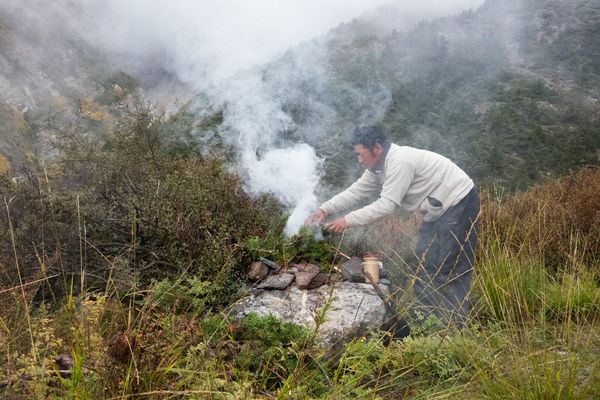
Sherpa Chicken Curry (Nepal)
Nepalese food understandably shares some similarities with Indian cuisine, but Nepalese curries tend to be lighter and less fiery than Indian creations, and are considered healthier. When it came to sourcing an authentic recipe, we knew who to ask. Last year Selective Asia’s founder Nick was introduced to Karma, a Nepalese Sherpa who collectively founded the Himalayan Homes Trust with his wife Jenny and her sister Joanna, in response to the 2015 earthquakes in Nepal.
Karma is from a small village in the Himalayas that was one of the worst hit areas, and all the money raised by the trust goes to help this and similar remote Himalayan communities to re-build their lives. Nick discovered that Karma is an excellent cook, and asked him to rustle up a traditional Nepalese meal for the team to mark the launch of our Nepal programme. The Sherpa Chicken Curry was devoured that evening: nuff said!
Ingredients (serves 4)
8 skinless chicken thighs (bone in)
2 large onions
4 large ripe tomatoes
½ a bunch of fresh coriander
vegetable oil
1 stick of cinnamon
4 cloves
1 tsp cumin seeds
3 fresh bay leaves
1 tsp ground turmeric
1 tbsp ground coriander
1 fresh red chilli (optional)
Marinade
5 cm piece of fresh ginger
1 bulb of garlic
1 tsp fennel seeds
1 tsp hot chilli powder
250 ml yoghurt, plus extra to serve
1 lemon
Method
To make the marinade, peel and roughly slice the ginger, break up and peel the garlic cloves, then add to a dry frying pan over a medium heat, along with the fennel seeds. Heat for a minute to wake up the flavours, then transfer to a pestle and mortar with the chilli powder and a pinch of sea salt, and pound into a rough paste. Tip into a large bowl with the yoghurt, lemon zest and juice, and the chicken thighs. Stir to coat evenly, then cover and place in the fridge to marinate for at least 1 hour, but preferably overnight.
Peel and finely dice the onions. Chop the tomatoes. Pick the coriander leaves and set aside, then finely chop the stalks. Heat 4 tbsp of oil in a large pan over a medium heat, then add the cinnamon, cloves, cumin seeds and bay and let cook for five minutes. Do not burn them! Add the chicken in a single layer and cook for 5 minutes on one side, or until a golden crust develops. Stir in the ground spices, then add the onion, tomatoes and coriander stalks. Turn the chicken over and cook for a further 5 -10 minutes, until browned all over. Pour over 350ml of cold water or chicken stock, then bring to the boil.
Turn down to a medium heat and cook for about 30 minutes uncovered, or until the chicken is cooked through and tender, stirring occasionally. Pick out and discard the cinnamon and divide between your plates. If using the chilli, finely slice it and sprinkle over the plates, tearing the coriander leaves on top. Serve with a dollop of yoghurt, plain rice and dal if you like.
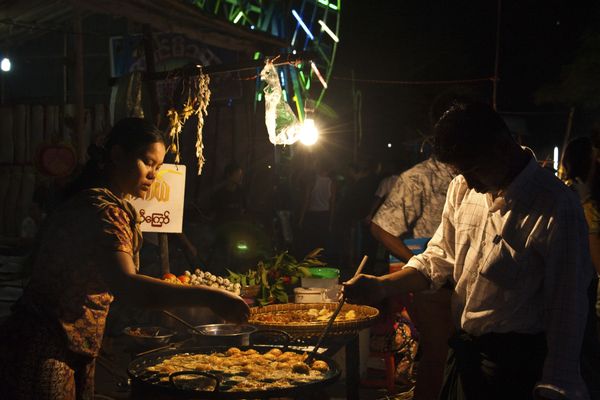
Bazun Hin Prawn Curry (Myanmar)
When I visit Myanmar I become mildly obsessed with the country’s odd-sounding, but surprisingly tasty speciality of pickled tea leaf salad. However, I intersperse my salad sampling with a Burmese curry or two. Each region in Myanmar offers a provincial twist on the recipe, but Burmese curries all tend to be mildly spiced and simple, filling and homely. The recipes for most curries have remained unchanged for centuries, and are usually passed down from family to family. Burmese curries can be quite oily, but Hnin – reservations manager in our Myanmar team – has shared her favourite prawn curry recipe, which uses less oil than most traditional recipes.
Ingredients (serves 2)
300g tiger prawns (peeled)
1 large finely chopped onion
5 cloves of garlic
½ inch piece of ginger (chopped)
1 tsp lime juice
3 tbsp vegetable oil
1 tbsp red chilli powder
½ tsp turmeric powder
3 tsp fish sauce
¼ tsp black pepper
100 ml water
1 tbsp coriander (for garnish)
Method
Season the prawns in lime, black pepper and salt.
Heat the vegetable oil in a medium size pan. Add turmeric powder, onion, garlic and ginger and stir fry until the onion is slightly brown. Then add red chilli powder. Stir, but don’t allow to burn. Add the fish sauce and the prawns. When the prawns start to turn slightly pink, add the water and reduce the heat. Leave to simmer for 6 to 10 minutes.
The cooking is complete once the liquid has reduced and the prawns are deep pink. Garnish with coriander. Serve with rice and fried vegetables.
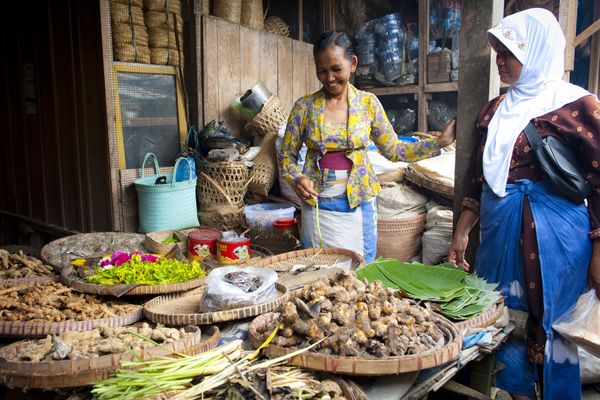
Beef Rendang (Indonesia)
Beef Rendang – a rich, spicy, coconut beef stew - is arguably one of the most popular dishes in Indonesia, and a hands-down favourite amongst the SA team. You might associate it with Malaysian cuisine - the dish originated in Sumatra, but was introduced to Malaysia by Sumatran settlers and is now equally well-loved throughout Malaysia. This isn’t a curry you can knock up quickly for a midweek dinner: the best rendang requires slow simmering in coconut milk to tenderise and flavour the meat, and add a richness to the sauce. As it’s a fairly time-consuming cooking process, it’s the go-to dish when Indonesians are keen to impress, and is often served at festivals and special occasions. Thanks to Dian from our reservations team in Indonesia for sharing her family’s rendang recipe with us.
Dian's tip: make the curry a day in advance as the flavour intensifies over time.
Ingredients (serves 6)
1.5 kg of beef, large chunks
2 litres of coconut milk (directly from an old coconut will be tastier than tinned coconut milk)
2 stems of lemongrass
4 lime leaves
2cm lime juice
2 turmeric leaves, tied
Curry seasoning:
5 candlenut
6 garlic cloves
100g of big red chilli, to give the red colour into the rendang
100g of curly red chilli, to give spicy taste (you can reduce if you are not a spice-lover)
2cm ginger, grilled
2 red onion sliced
2 cm galangal
3 cm of turmeric, grilled
1/2 tsp coriander
2 tsp salt
1/2 tea spoon nutmeg
1 tsp cumin, roast
Method
Prepare the curry seasoning ingredients and blend together. Sauté in a pan with 4 tablespoons of vegetable oil. Stir until the colour changes to become more golden brown. It is less than 5 minutes.
Pour the coconut milk into the sautéed seasoning and stir. Add the lemongrass, lime leaves, lime juice and turmeric leaves. Now is the time to also add Grandma's secret ingredient*. Stir until the coconut milk boils.
Reduce the heat and slowly simmer until the coconut milk thickens, the spices have soaked into the meat and the meat is tender (45-60 minutes). Be sure to stir regularly so that the sauce does not stick and burn.
Serve with roti and rice.
* Grandmother’s secret ingredient: 250 g of grated coconut roasted in a pan without oil; stir until brown, being careful not to burn. Mash with pestle & mortar (or in a blender) until oily.

Katsu (Japan)
Curry was allegedly introduced to Japan by the British in the early 1900s. Over the years it’s been reinvented to suit Japanese tastes, and is now a firm favourite with the nation. If you’re craving a curry but don’t have a store cupboard full of spices, or are short on time, Japanese Katsu is surprisingly simple and can be rustled up quickly. There are a number of variations on this popular dish, but essentially it's comprised of fried breaded meat (chicken or pork) drizzled with a thick curry sauce. When it came to sourcing an authentic recipe, SA Japan specialist Andrew shared his Japanese wife Satoyo’s go-to method. It may seem odd that a packet mix is used in the preparation, but apparently this is how it’s done – it’s not cheating! Katsu curry sauces are now widely available outside Japan, so there’s no need to travel to the country to stock up... although we know a decent tour operator who can help if you want to go!
Ingredients (serves 4)
4 pork cutlets
Salt and pepper
Flour
2 eggs beaten
Panko (Japanese breadcrumbs)
Oil, for frying
Curry ingredients:
1 tbsp vegetable oil
1 clove of garlic, chopped
1 medium carrot, diced
1 medium potato, diced
2 medium onions, diced
800ml water
Katsu Curry sauce mix (recommended brands: S&B, Yutaka)
Satoyo's tips:
Add 1 piece of dark chocolate to make the sauce richer
Add red wine to the water to give it a richer taste (eg 100ml wine + 700ml water)
After the curry sauce has melted add 1 tsp of Worcestershire sauce or tomato ketchup
Method
To prepare the Tonkatsu (meat)
Season both sides of the pork with salt & pepper. Coat with flour and dip it in the beaten egg. Coat with panko, pressing lightly with your hands. Deep fry for about 4-5 minutes or until nicely browned and thoroughly cooked. Transfer to a paper towel. Slice the meat diagonally.
To prepare the curry sauce
In a large pot, heat 1 tbsp of vegetable oil. Add the chopped vegetables and saute for 2-3 minutes. Add 800ml water (exact amount will depend on which curry sauce you use) and bring to the boil. Turn down the heat and simmer for 15-20 minutes to soften the vegetables. Add the curry sauce mix into the pan. Stir until completely melted and simmer for a final 5 minutes.
Serve the Tonkatsu on a bed of steamed rice and pour the curry sauce over it.
Speak to one of our Destination Specialists on +44 (0)1273 670 001, or send us your enquiry.
by Gemma on 25th October 2018